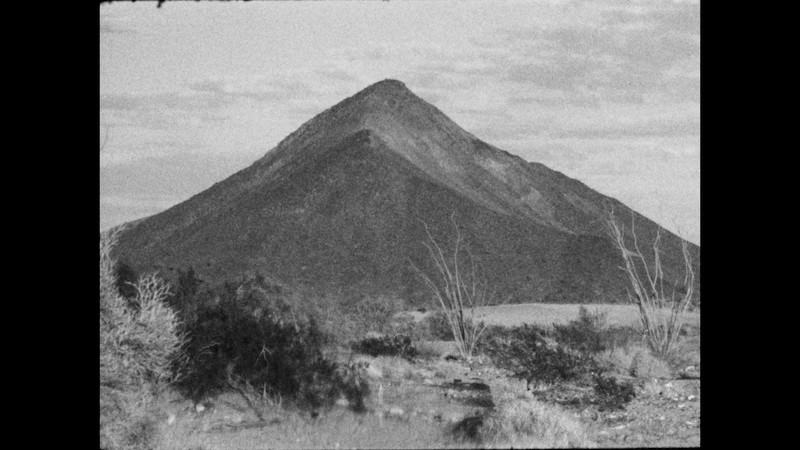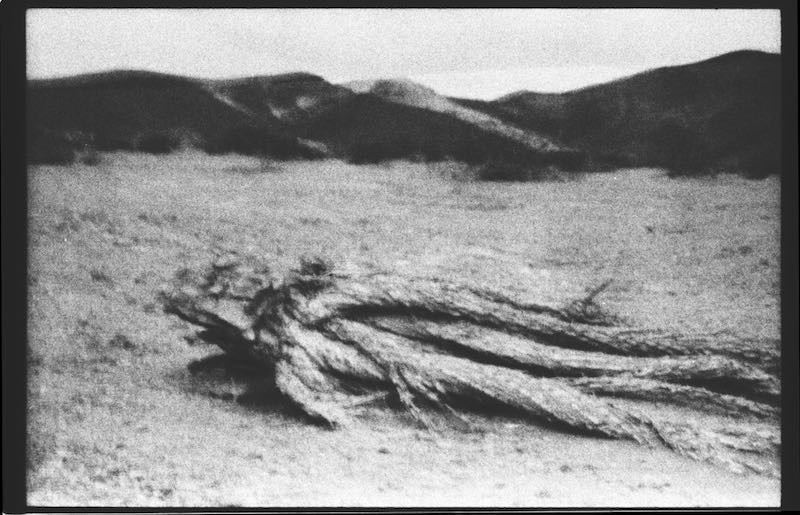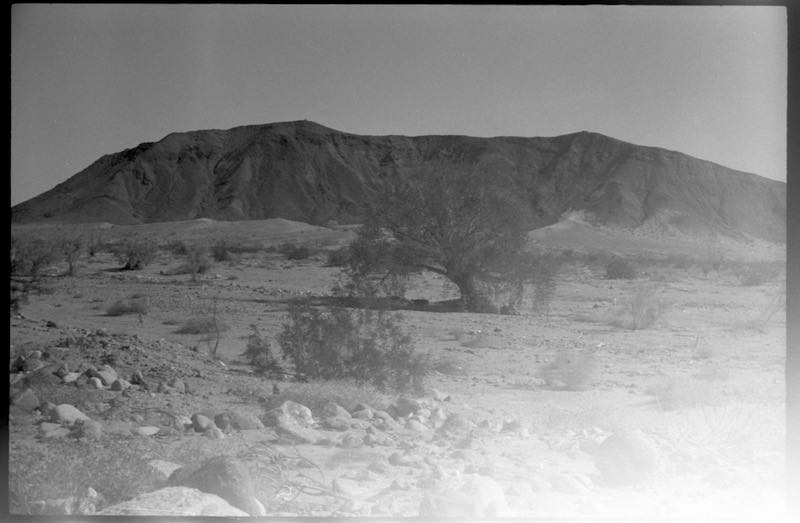El Chinero, une colline fantôme
-
Réalisé par Bani Khoshnoudi • Écrit par Bani Khoshnoudi
-
France, Mexique • 2023 • 11 minutes
- Réalisation :
Bani Khoshnoudi - Écriture :
Bani Khoshnoudi - Image :
Bani Khoshnoudi - Son :
Andy Moor - Montage :
Bani Khoshnoudi - Musique originale :
Andy Moor
- Production (personne) :
Bani Khoshnoudi - Production (structure) :
Pensée Sauvage Films - Participation :
CNAP - Centre National des Arts Plastiques - Ayant droit :
Pensée Sauvage Films
- N° ISAN :
non renseigné
Résumé
El Chinero se situe dans le désert de la Basse-Californie au Mexique. Malgré son nom, il n'y a aucune trace du drame qui y eut lieu en 1916. Des centaines de migrants chinois sont morts en fuyant la violence du pays. Comment combler le vide avec des images, construire une archive là où il n'en existe pas ?
"De la mort, vers 1916, d'environ soixante-dix exilés chinois et asiatiques sur un vaste terrain escarpé entre la baie de San Felipe et la ville de Mexicali, conséquence d'une probable tentative de fuir les campagnes racistes visant à les éliminer du territoire mexicain, il ne reste presque rien, aucun registre officiel, aucune plaque commémorative, aucun chantier archéologique. Rien sinon le nom donné depuis au mont qui surplombe ce désert : El Chinero. En l'absence de documents et dans l'attente d'un travail scientifique qui mette au jour l'histoire du racisme couverte par une identité nationale pourtant construite à l'effigie du mestizo, l'artiste et cinéaste iranienne Bani Khoshnoudi invente un début d'archive, prolongement fragile et inchoatif de l'esprit du lieu, à partir du peu que l'on puisse savoir : légende, histoire orale, présences fantomatiques, traces ambiguës. Tout en fixant l'aura du lieu, la pellicule, développée au moyen d'éléments organiques et inorganiques prélevés sur place, en transporte également jusqu'à nous la lumière et la matière. L'un des cartons de ce film en noir et blanc muet, accompagné d'une bande-son à la guitare électrique d'Andy Moor évoquant un western spectral, demande si la terre et les roches peuvent témoigner. La montagne peut-elle parler pour les morts ? Une pensée analogique peut-elle porter jusqu'à nous la voix des fantômes ? Et par extension, ce film peut-il témoigner pour d'autres tragédies, remuer la terre des fosses communes qui, partout dans le monde, ne s'ouvriront qu'avec la chute des mythes nationalistes et des régimes totalitaires ?"
(Antoine Thirion - Cinéma du réel)
El Chinero is a site in the Desert of Baja, California. Despite its name, little proof exists about a tragedy that took place here in 1916. Hundreds of Chinese migrants died while fleeing violence in mainland Mexico. How can one fill the void with images, construct an archive where none exist?
"The death, around 1916, of some seventy Chinese and Asian exiles on a vast rugged terrain lying between San Felipe Bay and the town of Mexicali, was likely the result of their attempt to flee the racist campaigns aimed at eliminating them from Mexican territory. Yet almost nothing remains of this event, no official register, no commemorative plaque, no archaeological dig. Nothing except the name given since then to the mountain overlooking this desert: El Chinero. With no documents and no scientific work to disclose the history of racism covered by a national identity nonetheless built in the image of the mestizo, Iranian artist and filmmaker Bani Khoshnoudi invents the beginnings of an archive, a fragile and inchoate prolongation of the spirit of the place, based on the little that is known: legends, oral history, ghostly presences, ambiguous traces. Capturing the aura of the place, the filmstrip, developed using organic and inorganic elements collected on the site, also steeps us in its light and matter. One of the intertitles in this black and white silent film – with Andy Moor's electric guitar on the soundtrack evoking some ghostly western – asks if the earth and rocks can bear witness. Can the mountain speak for the dead? Can an analogue thought carry the voice of the ghosts to us? And by extension, can this film bear witness for other tragedies and stir up the earth of mass graves worldwide that will only be opened after the demise of nationalist myths and totalitarian regimes?"
(Antoine Thirion - Cinéma du réel)
Sélections et distinctions
- 2023 • Cinéma du réel • Paris (France) • Compétition
- 2023 • Images Festival • Toronto (Canada) • Sélection
- 2023 • FICUNAM - Festival Internacional de Cine UNAM • Mexico (Mexique) • Sélection
Comment avoir accès au film ?
-
Édition DVD
- Il n'existe pas d'édition DVD à notre connaissance
-
Accès VOD
- Il n'existe pas d'accès en VOD à notre connaissance
- Distribution
- Aide sur les moyens d'accéder à un film


